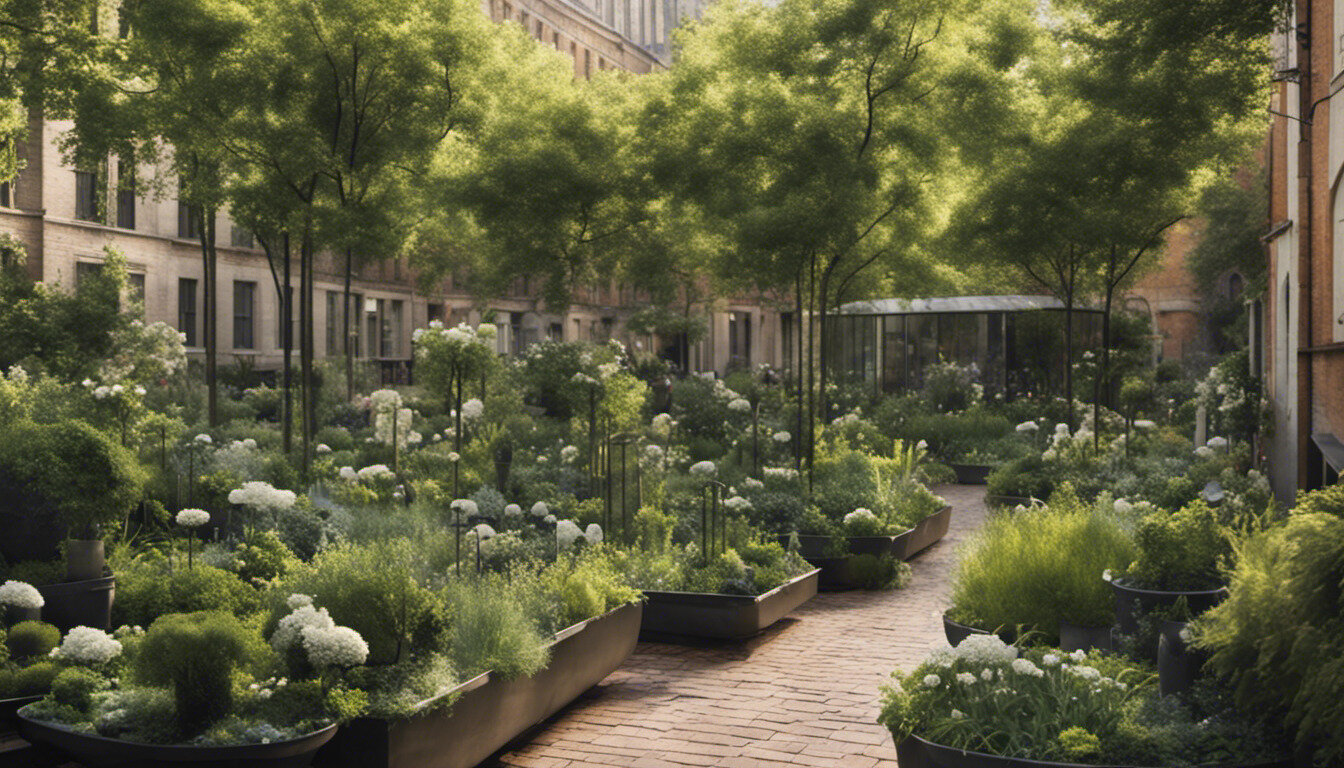The Definitive Guide for City Blooming
The Definitive Guide for City Blooming
Blog Article
How City Blooming can Save You Time, Stress, and Money.
Table of ContentsThe 5-Second Trick For City BloomingLittle Known Questions About City Blooming.City Blooming Can Be Fun For EveryoneThe Greatest Guide To City Blooming7 Easy Facts About City Blooming Explained
Interested in growing food available in the City of Chicago? Thinking of starting a neighborhood garden? Adjustments to the Chicago Zoning Ordinance permit farming uses like community gardens and city ranches in several components of the city. Below is a checklist of often asked questions pertaining to the guidelines and regulations that farmers must consider when planning a metropolitan agriculture job.
The zoning change does not modify any various other codes handling composting, building permits, purchasing or renting City owned property, business licenses or ecological contamination. There are existing codes that manage these issues and they stay completely effect and may apply to your task. Community yards are generally owned or handled by public entities, public organizations or community-based organizations and kept by volunteers.
Urban farms grow food that is meant to be marketed, either on a not-for-profit or for-profit basis. Because of their commercial function, metropolitan ranches require a company license. Yes. A neighborhood yard is enabled to sell surplus create that was grown on site if the sales are accessory or secondary to the garden's main function described above.
The Of City Blooming
The amount of garden compost material can not surpass 25 cubic yards at any kind of offered time according to the criteria in 7-28-715 of the City's Municipal Code. Due to the fact that the soil at most new yard websites needs modifying, garden compost, dirt, timber chips, or other materials can be obtained to construct or improve the expanding space.

If a building license is called for then the hoophouse will certainly be considered an accessory building. You can find out more about the building license needs by contacting the Department of Structures. The 25,000-square-foot dimension restriction is meant to avoid a solitary area yard from controling a given block or diminishing the block's existing domestic or industrial browse this site character.
The restriction does not relate to yards located in Public Open Area (POS) areas. Can there be more than one community garden that is 25,000 square feet on a single block? Yes. The dimension limitation puts on specific yards, not to specific blocks. No. Secure fencing is not required, nonetheless, yards that have large parking lot may be required to mount fencing or various other landscaping functions.
City Blooming Things To Know Before You Get This
B1 & B2 areas need that all industrial use tasks be performed indoors. R areas limit commercial activity. The regulations mirror the purpose and intent of the Zoning Code. Is fencing needed for urban ranches? Yes. Fences may be called for, in addition to landscape design and testing, for particular car parking locations and outside job or storage space areas depending upon place and the particular task occurring.
Urban farms require building licenses and zoning approvals prior to construction (urban gardening). Various other forms of city evaluation might be called for depending on details frameworks, tasks, size, landscaping, licensing, public heath and stormwater management problems.
Yes. The type of license is established by what is occurring at the site. The Division of Service Matters and Consumer Security can help figure out the details sort of organization license that's needed. Yes. Off road auto parking is needed for many industrial projects in Chicago. The required variety of garage is based upon the number of staff members servicing website and not the square video of the expanding area.
Some Known Factual Statements About City Blooming

Yes. A city farm can offer garden compost product produced on site, however, the operation must conform with the policies in 7-28-715 of the Chicago Municipal Code. Yes. Aquaponic systems are enabled inside on urban ranches in several zoning districts. A zoning evaluation and structure license is called for in order to mount structures or systems and an organization permit is required as defined above.
Up to five hives or colonies of honey might be maintained as an accessory use. However, beekeepers should sign up with the Illinois Division of Agriculture. For more details regarding the suggested zoning change you may call the Division of Real Estate and Economic Advancement, Bureau of Planning and Zoning at 312.744.8563.
, which takes area in country areas at the edge of suburbs.
City Blooming Can Be Fun For Everyone
, that seek to form social networks started on a common values of nature and neighborhood holism. These networks can create by method of formal institutional assistance, coming to be incorporated into neighborhood community preparation as a "transition community" motion for sustainable city development.
The extra straight accessibility to fresh vegetable, fruit, and meat items that might be become aware through metropolitan farming can improve food security and food security while reducing food miles, resulting in lower greenhouse gas discharges, therefore adding to environment adjustment mitigation. Several of the first evidence of metropolitan agriculture originates from Mesopotamia.
Report this page